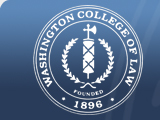The Supreme Court's Increased Attention to the Law of Lawyering: Mere Coincidence or Something More?
Abstract
The United States Supreme Court considered seventeen cases raising issues related to the role of attorneys and the practice of law during the 2009 Term. This body of cases represents a substantial departure from dockets in recent history, where typically the Court took up less than a handful of cases involving regulation of the legal profession. While some might consider the increased number of cases addressing the law of lawyering a mere coincidence, this article contends that something more is occurring. The Court’s decision to devote so much of its limited time to these matters is noteworthy not only for the individual issues resolved, but also for the cases’ existence, indeed dominance, on the docket. This article is the first to present a comprehensive overview of the Supreme Court’s newest lawyering cases. Broadly speaking, the cases fall into two categories: access to sound lawyering and protection from bad lawyering. The first group of cases addresses access to legal advice, questioning First Amendment protection of attorney advice and advertising, the application of fee-shifting statutes to encourage legal representation for meritorious cases, and the availability of an immediate appeal to preserve attorney-client privilege in the face of a court order to disclose protected materials. The second group of cases involves harms caused by lawyers. These cases include prosecutorial misconduct and ineffective assistance of counsel claims where a criminal defense attorney lacks the requisite experience, offers insufficient mitigation evidence during sentencing, delivers a poor closing argument, gives faulty advice, misses an essential filing deadline, or fails to request a limiting instruction. Part I of this article examines the cases individually and highlights the ways each case presents critical issues related to the practice of law and the regulation of lawyers. Part II turns to a collective reading of the cases, reflecting on the Court’s heightened interest in affairs of the legal profession, and suggesting insights that might be drawn by viewing these cases as part of a larger picture, rather than standing alone. Though the full measure of these cases’ impact on professional responsibility jurisprudence will be realized only with the passing of time, this article offers three preliminary observations. First, when read together, the cases reveal a troubling pattern of limits on access to legal advice as well as harms caused by bad lawyering. Second, the cases offer fundamental lessons for those involved in future regulation of the legal profession. Third, the cases illustrate the importance of constitutional considerations to the field of lawyer ethics.
Recommended Citation
Knake, Renee Newman. "The Supreme Court's Increased Attention to the Law of Lawyering: Mere Coincidence or Something More?" American University Law Review 59, no.6 (August 2010): 1499-1570.
Included in
Courts Commons, Legal Ethics and Professional Responsibility Commons, Litigation Commons

